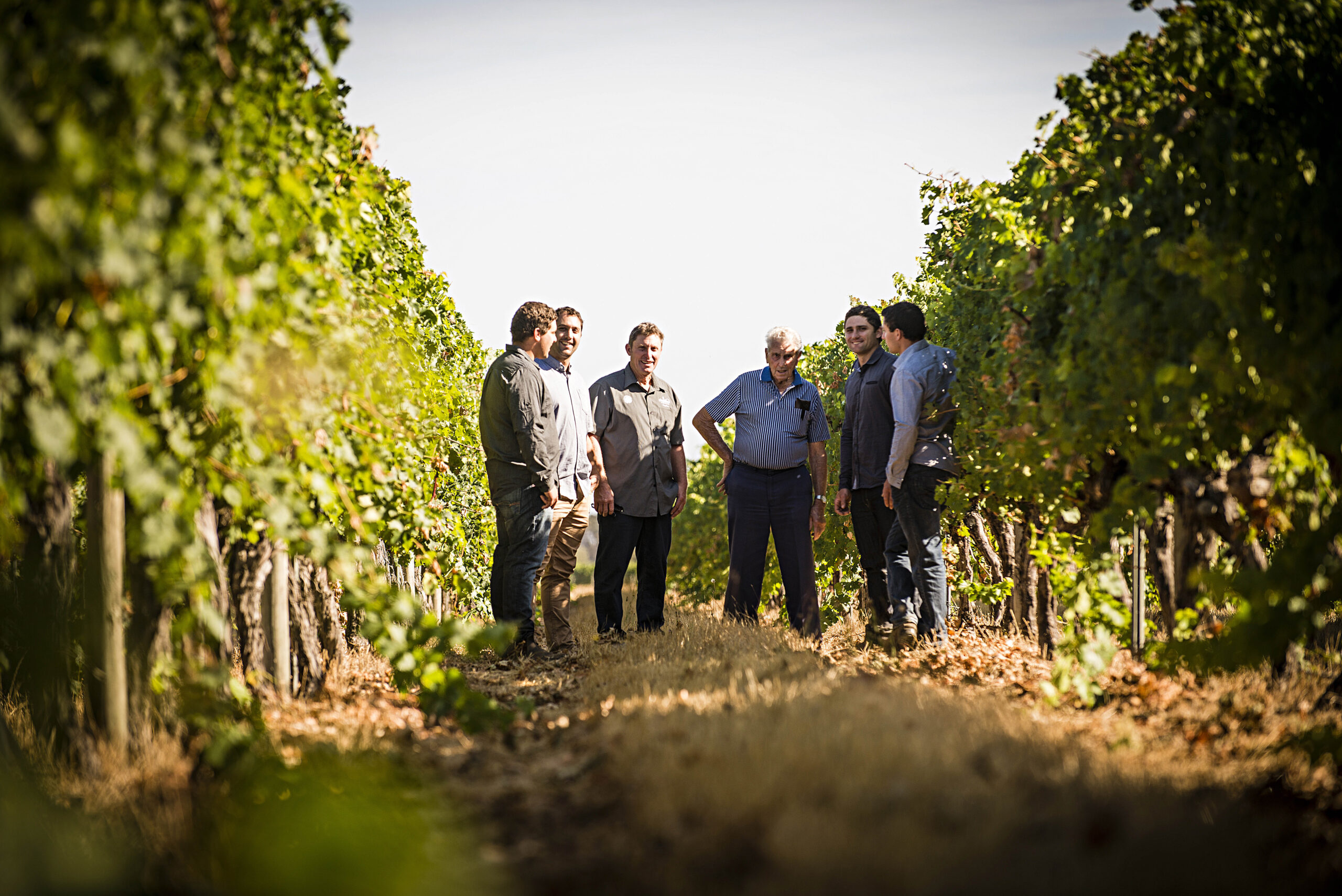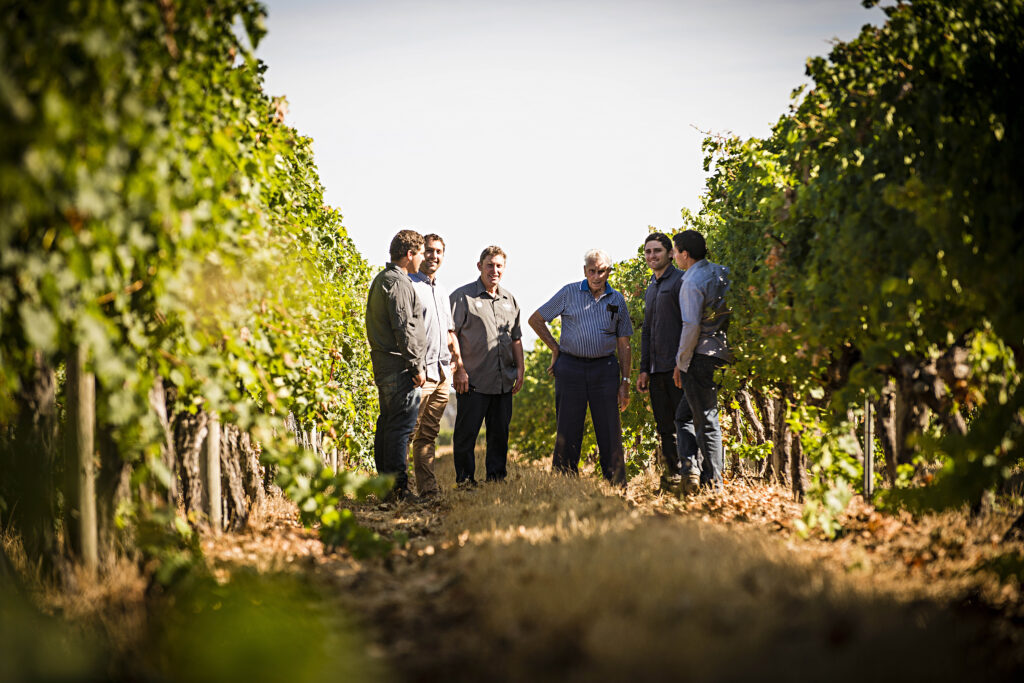 A NEW VOICES STORY by Dianne Bortoletto
A NEW VOICES STORY by Dianne BortolettoItalians have left an indelible mark in all corners of the globe, shaping human history and modern culture from arts to science, inventions to architecture and of course, food and wine. In Margaret River, Dianne Bortoletto looks at some Italian influences that add to the region’s story.
Cherubino Wines
Driving into Cherubino Wines, you could pretend you were in Tuscany; the gravel driveway meanders alongside rows of vines toward a two-story Tuscan-looking cellar door, the surrounding garden adorned with large ceramic pots, Cyprus pines and olive trees.
Owner and winemaker Larry Cherubino, a first-generation Italian, explained how his family came to be in Australia, and like many immigrant stories, it’s marred with struggles.
“Grandad immigrated from Calabria in 1939 with the view of setting up a farm in Logue Brook Dam just outside of Harvey (about 90 minutes south of Perth),” Larry said.
“When he left Italy, my grandmother was pregnant with my mum, and the aim was for her to immigrate to Australia as soon as possible. But then the Second World War broke, out and Italy was initially an enemy, and he was rounded up and put in an internment camp.
“It was ten years before my grandmother and mother could come to Australia. My mum was ten years old when she met her father.”
Also born in Calabria, southern Italy, Larry’s father immigrated to Australia in the late 1950s as a 12-year-old boy making the long, arduous boat journey alone to be reunited with an older brother, one of Larry’s uncles, who was already in Perth.
“I’ve still got relatives in Reggio, Calabria. I’m not that close to them these days, but it’s funny when I go back there, there’s lots of familiar-looking people!”

Image: Tuscan influenced architecture of Cherubino Wine's Margaret River vineyards and cellar door.
Larry, who has 30 years of experience in the wine industry, has spent a lot of time in Tuscany, where Chianti is his drop of choice, and about five years working in Sicily.
“My Italian heritage is a big part of what we what we do and how we go about it,” the father of three said. My grandad had three acres and every inch of those three acres was planted with tomatoes or something you could eat. Yes, we make wine, but we’re ultimately farmers, we grew up on the land and I really put a heavy emphasis on the way we grow and the way we farm, great wine starts in the vineyard. From a winemaking point of view, what’s most important is that everything we make has to be really sympathetic to food.”
When it comes to food, Cherubino Wines has already carved a name for itself in Perth with a slick city cellar and recently opened a 50-seat restaurant Frui Momento, Latin for ‘enjoy the moment’, next door to their Margaret River cellar door.
In Margaret River, Cherubino Wines has 40 hectares under vine, where the focus is predominately Chardonnay, a varietal the region is renowned for. They also have 60 hectares in Pemberton (about two hours south-east of Margaret River), and 100 hectares in Frankland River in the Great Southern (about three hours east) where they grow Italian varietal Fiano. Cherubino Wines were responsible for bringing the first cuttings of Fiano into Western Australia and now boast the oldest and largest Fiano plantings in the state.
Cherubino Wines produces other Italian varietals, notably Nebbiolo, which Larry describes as getting better with every year, as well as white Arneis that originates from Piemonte.
Of the 25,000 cases produced each year, Cherubino Wines exports close to 30 per cent to Europe, United Kingdom, United States, Canada, Hong Kong, Thailand and Malaysia.
Credaro Wines
One of the oldest names in wine in Margaret River is Credaro, a pioneering family who first started making wine for family and friends 100 years ago, an Italian table wine called Fragola.
Cesare Credaro arrived on the SS Omar from Naples into Fremantle, Western Australia in 1921. With his brother Olympio he moved to the northern part of what is now the Margaret River Wine Region, working on the land to cut sleepers by hand for the railways.
Living frugally and saving all they could, the brothers had an opportunity to conditionally purchase 146 acres (59 hectares) for 500 pounds from the Government, on condition that they had to continue to cut sleepers and thus clear the land for farming. Robert Credaro, Cesare’s grandson, still has the broad axe his grandfather used.
"They had saw pits where they’d roll a big log over and there’d be one guy above and one below in the pit sawing by hand, that’s how they did it,” said father-of-five Robert, who is now semi-retired.
Initially potato and sheep farmers, the Credaro family first planted a commercial crop of vines in 1988, supplying grapes to other wineries. In 2003, Credaro Wines built a winery and established their own label soon after.
“We also farm pomegranates, avocados and a new breed of sheep, with 2,000 breeding ewes,” Robert said.
Over the last hundred years, the Credaro empire and family has grown, but the business remains family-run with the fourth generation now at the helm. The eldest of the four sons and Credaro Wines operations manager, Matt Credaro, works alongside his twin brothers Mike and Chris, while brother Jason, a qualified winemaker, has moved into brewing, but is still involved in the family business.

Image: Three generations of the Credaro family in the vineyards at Woolston A
“Being a part of the family business is great and a privilege, I enjoy working with my family and my brothers,” Matt said. “I’m not sure my daughters will follow the family tradition of being out on a tractor, but my nephews love it–there’s a few children in generation number five likely to carry on the family tradition.”
Located on Caves Road, the Credaro cellar door is more than a tasting stop. The white stucco building sits within a garden of beautiful rose bushes and mature trees, and the entrance arbour is covered with purple wisteria. Inside, the walls tell the Credaro story with old family photos, and out on the balcony the breathtaking views of the rolling hills make it a popular wedding venue. There’s also a gorgeous clothes and homewares boutique to wander through.
Credaro Wines has four vineyards in the Margaret River Wine Region, a total of 107 hectares growing predominately Chardonnay and Cabernet Sauvignon, but also other varietals includingSangiovese and, excitingly, they have grafted cuttings of Italian varietals Montepulciano, Barbera and Nebbiolo which are expected to produce fruit in the next three years. They produce one million bottles each year and continue to make Fragola, which means “strawberry” in Italian, from the original cuttings from those first vines.
“At the moment, we’re exporting ten per cent of our wines to Singapore, United Kingdom and Taiwan,” Matt said. Future plans for Credaro Wines include making Italian styles when the new vines mature, and in time, opening a new cellar door at their Wilyabrup vineyard.
Mr Barval
One of Margaret River’s smallest producers, Mr Barval, is heavily influenced by owner and winemaker Robert Gherardi’s Italian heritage along with his experience working in Italy’s famous Barolo wine region.
A second generation and dual citizen Italian, all four of Robert’s grandparents immigrated from a small town and alpine valley wine region called Valtellina, famous for Nebbiolo, about 100 kilometres northeast of Milan near the Swiss border.
In fact, the name Mr Barval is an acronym for Robert’s wine experiences: Mr represents Margaret River, Bar represents Barolo, and Val is for Valtellina.
“My grandparents were ‘off the boat’ [arriving in] in Fremantle, and I grew up in Perth’s southern suburbs. We did the holy trinity of typical Italian experiences: every summer we’d make passata, every autumn we’d make wine and every winter we’d do one or two pigs and make salami and sausages. They were such fun days!” Robert said.
“I studied winemaking in my mid-20s and had the desire to do an overseas vintage and get some different experience. A lot of Australian winemakers go to France because we grow so many French varietals, but for me, I had the urge to experience winemaking, but also to reconnect with family and with a culture that I only knew as an Aussie-Italian.”
Following a vintage in Barolo, Robert was offered full-time work, and moved his wife and two young children to Piedmonte where the family lived for a few years. Those traditional Italian winemaking principles he learnt now inform his approach at Mr Barval.
“We make our wines the same traditional way, they are very natural in that we hand-pick, we wild ferment, we don’t fine, we don’t filter. It’s not this more modern natural winemaking phenomena, it’s not the naturalness that’s important, it’s growing the right grape in the right area and looking after it well and capturing the essence of the season.”
What’s interesting about Mr Barval is that they don’t own vineyards, but rather they rent rows of vines from several different vineyards, working with the landowners and tending to those vines themselves, plucking leaves to allow more sun to hit the fruit or directing vine shoots to grow a certain way.
“Renting rows of vines is par for the course in Europe, but here, no one had heard of that system, so we had some convincing to do,” Robert said.“Working with grapes from great sites, that are established and balanced, allows us to make the unfiltered and unfined wines, but in a really fine wine way because we’re working with a base level of grapes that are perfect. Our focus is on the varietals that do really well here, which is Cabernet Sauvignon and Chardonnay, but we do make a small amount of Nebbiolo too.”
Mr Barval’s first harvest was in 2015, when they made just 4,500 bottles across four different wines. This year, their largest production to date saw them produce eight different wines and 20,000 bottles in total. While highly sought-after domestically in Australia, Mr Barval has exported wine to Singapore, Hong Kong and a selection of private buyers in Europe.
Altro?
There are other small Italian producers and Italian varietals grown in the region. Visithttps://winewa.asn.au/margaret-river/for more information.
